The Unsung Hero Of Pontiac Design
by Jeff Denison
The Early Years
There are few times in history when all of the planets align to achieve true greatness. In the world of sports, the ’72 Miami Dolphins won every game of the season, every playoff game, and the Super Bowl. This amazing accomplishment had never been achieved before or since in the game of professional football.
For the Pontiac Motor Division, its award-winning Super Bowl season spanned the decade of the ’60s. Chevrolet and Ford may have outsold them in sheer numbers, but Pontiac was definitely the auto industry leader in styling, image, innovation, and performance. Countless articles have been written documenting the Pontiac legends of the ’60s, such as:
Semon E. “Bunkie” Knudsen, a true leader, who changed Pontiac from a reliable old man’s car into a youthful performance division;
Pete Estes, for his years of leadership and engineering excellence at both Oldsmobile and Pontiac Divisions, as well as the creation of the Wide Track;
John Z. DeLorean, for his rare ability to understand exactly what the customer wanted, and produce just the right selection of automobiles in his own flamboyant way;
Malcolm R. “Mac” McKellar, who gave Pontiacs all the horsepower and torque they needed with his Super-Duty, Tri-Power, and Ram Air engines;
Art Fitzpatrick and Van Kaufman and their award-winning illustrations that graced the Pontiac dealer catalogs throughout the ’60s;
Jim Wangers and his keen ability to promote just about anything.
A man in Pontiac’s history who has been mostly overlooked, however, is one of the most significant: Jack Humbert of General Motors Design. Jack led the design team that gave Pontiacs of the ’60s the leading edge in the art of automotive styling.
Design is a very powerful tool. Many people purchase cars based strictly on how they look, and that’s one of the major factors that enabled Pontiac to attain and retain the number three position in sales throughout the ’60s.
Humble Beginnings
Jack Humbert was born April 9, 1924, in Canton, Ohio, and grew up in this small Mid-Western town. Like many children of the era, Jack was drawn to the automobile at an early age, and purchased his first car at 16.
After graduating from Middlebranch High School, Jack spent the next three years, 1943 to 1945, in the U.S. Army, serving in an armored division in the European theater. After World War II, he returned home to Canton and went to work at Oscar’s Service Station, a combination gas station and used car lot. Jack was a true “car guy,” who loved to work on them, as well as draw them.
His illustrating talent led him to the Central Academy of Commercial Art in Cincinnati, Ohio, where, after graduating in 1948 with a degree in Automotive Design, he went to work for General Motors Styling as a junior designer. For the next several years, Jack honed his skills and designed cars under such legendary design leaders as Harley Earl, then vice president of GM Design; as well as Bill Mitchell, who would become the next vice president of GM Design. Jack developed an eagle eye and the respect of his fellow team members working in both the interior and exterior design studios.
In March of 1959, at the young age of 34, Jack was promoted to chief designer for the Pontiac studio. This would forever change the direction of Pontiac’s design and image. The basic themes for the all-new ’61-’62 model years had already been selected and were well into development, having reached the full size clay-model stage by this time. This gave Jack the opportunity to do what he did best: concentrate on the details. As a result, the ’61-’62 designs attained a new level of refinement that set a very high standard, even for GM.
This was a turning point for Pontiac, and in 1961, it moved into third place in sales behind Chevrolet and Ford. The Division’s styling was fresh and youthful, making it a design leader throughout the ’60s and well into the ’70s. The following are but a few of the many landmark models designed under Jack Humbert.
Stand-Out Models
The ’63 Grand Prix Pontiac introduced a personal luxury car design that stunned the automotive industry: the award-winning Grand Prix. Though Humbert had a hand in the premier ’62 edition of the Grand Prix, the ’63 was the first car completely designed under his leadership.
It changed the look of automobile design with its stacked headlights, recessed grille with round parking lights, a chiseled “coke bottle” body side, and a formal roofline with a concave backlight. This design also started a new trend by restraining the use of chrome, thereby reversing a practice that had become so prevalent in the design themes of late ’50s automobiles.
The ’63 Grand Prix won a Certificate Of Design Merit award from the Industrial Design Institute for its outstanding design. Pontiac sold 73,000 Grand Prixs in 1963, more than doubling that of the ’62 model. Imitation is the sincerest form of flattery, as evidenced by competing car companies that incorporated aspects of the ’63 Grand Prix’s styling in their future products.
The ’65 Pontiac Lineup
The entire ’65 Pontiac lineup received the coveted Motor Trend Car of the Year Award; the major factor, “Design.” Pontiac’s fullsize cars graduated from their slab-sided, chiseled look of the ’63-’64 body styles, to the beautifully sculpted, fastback coupes of the ’65-’66 era. They became longer, leaner, and more aggressive with this elegant, free-flowing design. Pontiacs retained the patented stacked headlights and split-grille theme, only this time the ironing board was designed into the hood to the center beak of the split grille. The higher end cars of the ’65 lineup received diecast rearend treatments and the Grand Prix continued the concave backlight. “I went out on the Design patio to view the early design proposal for the fullsize clay model of the ’65 fullsize Pontiac and thought the team had lost it,” Designer Bill Porter remarked. “In typical Humbert fashion, however, he pulled the design together and made an award-winner out of it.”
The LeMans and GTO lineup was mostly carryover from the all-new ’64 design, but the front and rear were updated with fresh details such as stacked headlamps, twin protruding split grilles, and wraparound taillamps hidden in chrome, as well as a new single hoodscoop design for the GTO.
The ’67 Firebird The ’67 Firebird defines how important design is to the automobile. GM’s Chevrolet studio had completed the design work on the ’67 Panther/Camaro, before Pontiac had even gotten started. The Pontiac team was busy working on one of John Delorean’s many pet projects, a two-seater sports car named the XP-833 Banshee. General Motors upper management told DeLorean the Banshee was out and Pontiac would share the Camaro’s already-designed sheetmetal.
All Jack’s team changed was the hood, the grilles and headlights, the front and rear bumpers, tail panel and taillights, as well as stamping six hash marks in the Camaro’s quarter-panels. Pontiac ended up with a very distinctive-looking car, definitely a more aggressive design than that of the Camaro. Much of the change came from the front chrome bumper that covered the leading edge of the Camaro’s fenders, giving the Firebird a uniquely different appearance from its F-body cousin.
It’s interesting to note that DeLorean still didn’t give up on his vision of a two-seat sports car for Pontiac, and had design staff build a fiberglass model of a shortened ’67 Firebird with two seats called the Banshee T/T. History has shown John DeLorean continued to pursue his two-seater sports car vision, even after leaving GM.
The ’68 GTO
This Pontiac was so revolutionary, it would change the way cars were designed forever. It was the first application of a flexible bumper that was integrated into the design of the body and painted body color. This new Endura bumper was made of a steel-reinforced rubber-like material developed by GM’s Inland Division. The ’68 was the first GTO to offer hide-a-way headlights and hidden windshield wipers
The ’68 “A” body was started under Bill Porter in the Advanced Pontiac design studio. It was 6 inches shorter than the ’67 and rode on a 3-inch shorter wheelbase. Bill steered the designers toward rounder, more voluptuous shapes. “We must have sculpted the body side a hundred times trying to get those shapes perfect and that was before Jack even started working on it,” Porter recalled.
This basic theme was then sent to the Pontiac production studio under Humbert’s guidance. “Jack took a good design and made it great, that’s what he was good at,” Porter said. Many of the ’68 GTO design elements were copied by competitors on future vehicles. A quote from Motor Trend magazine, which named the ’68 GTO Car of the Year said, “Never before has an automobile been so successful in confirming the correlation between safety, styling, and performance as the ’68 GTO.”
Conclusion
Humbert’s designs were a reflection of the man. He wasn’t flamboyant, but he dressed in tailored three-piece suits that were always impeccable. He was a true gentleman’s gentleman, with a great sense of humor and would not disagree simply for the sake of creating controversy. He knew the direction in which he wanted the design themes to go and would slowly develop the clay models until he had realized his vision. Bill Porter once told me, “Jack was the iron fist in a velvet glove-he would take in everyone’s input and slowly move the clay model in just the right direction.”
Jack enjoyed pulling a studio chair up to the fullsize clay models and, working with his talented sculpting team, developing those surfaces and details that would make the Pontiacs stand out from the crowd when they showed up in the dealer showrooms.
This is just half the story. Join us next month, when HPP delves into later Humbert designs like the ’69 GP, and ‘701/2 Firebird, and provides testimonials from fellow designers and coworkers.
A Career Flourishes
Pontiac’s designs from the ’60s and early ’70s stood the test of time, still looking as great today as they did when new-a major accomplishment. The vast majority of the most-prized Pontiacs in collector circles today were designed under Jack Humbert’s leadership.
Additionally, in the “The 10 Best Pontiac Designs,” which appeared in the Sept. ’08 issue of High Performance Pontiac magazine, all but one were completed during Jack Humbert’s regime. This speaks volumes about the man, his team, and their many talents. Let’s learn more about them.
1969 Grand Prix The late Wayne Vieira worked closely with Jack on the all-new ’69 Grand Prix design. Ben Harrison, of Engineering’s Special Projects Department had the idea of using a stretched version of the A-body chassis with a 118-inch wheelbase instead of the larger 122-inch B-body the GP had been built on. This gave the new A-special, or G-body, a long-hood, short-decklid proportion that was popular in the new pony cars. “The ’69 Grand Prix was designed in just over a month, it was one of the fastest programs I have ever worked on,” said Vieira in 1999, when he was the chief designer of the Saturn studio. “We came up with one of the longest hoods in the industry.” The ’69 Grand Prix was sheer and clean with a very distinctive Pontiac split grille encased in a chrome bumper. This gave the Grand Prix a classic look. It also set a new trend in the appearance of the personal luxury car.
1970 1/2 Firebird
The ’70 1/2 Firebird was all-new from the ground up, but this time Pontiac had input in the design process. The driver and engine were moved three inches back.
Pontiac and Chevrolet design studios went in different directions on the ‘701/2 “F” car program, with Jack’s team winning the design battle and mastering the upper body that set the design direction for it. Pontiac’s newest visual element, the Endura bumper, pioneered on the ’68 GTO, played a major role in the styling of the all-new Firebird.
The design team put together one of the most aggressive cars to ever roam the streets of America, the Trans Am. Its stripes, spoilers, and Shaker hoodscoop went on to identify the T/A for the rest of the decade. This basic design was so good it lasted 12 model years.
Accolades
The talent at the Division was not lost on the automotive press. These are just a few of the highlights of the many car lines and models that were designed under Jack Humbert’s leadership of the Pontiac Design studio. The Division received four Motor Trend “Car of the Year” awards in less than 10 years: ’59 Pontiac Motor Division, ’61 Tempest, ’65 Pontiac Motor Division, and the ’68 GTO. This achievement has never been matched by any automotive manufacturer in the history of the “Car of the Year” award, before or since. Pontiac could have easily won the COTY for the ’69 Grand Prix or the ’70 1/2 Firebird, as these were both standout cars, but the readers and writers may have cried foul for the Division’s already unprecedented four wins in nine years.
Jack Humbert was promoted to Group Chief Designer over Pontiac, Oldsmobile, Buick, and Cadillac Design studios in April 1968, and Bill Porter became the chief designer of the Pontiac studio. Jack remained a Pontiac man the rest of his career at GM Design. He continued to move up the ladder and eventually earned the title Executive Director of Design in charge of all of the production exterior design in 1980 under the late Irv Rybicki, then vice president of design.
At Home
Jack Humbert and his wife, Evelyn “Smitty” Smith, had a daughter and a son. Daughter Jacqueline is happily married and living in California. Son Robert followed somewhat in his father’s footsteps and is an architect living in Louisville, Kentucky.
Jack deftly balanced family duties, designing beautiful Pontiacs by day, and being a certified car guy at night. He restored a car at home in his garage with the help of some of his friends.
Jack’s dream car was the work of another great automotive designer, Gordon Buehrig. While restoring a black, supercharged ’37 Cord phaeton, his perfectionist tendencies really showed through. The first time it was painted, he was unhappy with some of the reflections on the original production sheet metal, so he had some of the panels professionally reworked by his talented sculptors. He then had it repainted, and this time it was perfect.
Conclusion
Regrettably, in March 1985, Jack’s life was cut short by leukemia, but he left a legacy of automotive design that is second to none in the Pontiac world. Pontiac owned the decade of the ’60s-it was its era. The Division was the industry leader in styling and Jack Humbert was the in-house unsung hero, whose contributions command a special chapter in the Pontiac history book of legends from the ’60s.
A Team Effort Automobiles are designed by teams of designers, sculptors, and engineers. Here are some of the names of those from the Pontiac studio who shaped the decade of design leadership under Jack Humbert.
Designers
Duane Bohnstedt, Wayne Viera, Ron Hill, Glen Wintersheidt, Paul Deesen, Jim Ferron, Elia Russinoff, Bill Porter, Roger Hughet, George Pysche, Al Flowers, Maurice Chandler, John Perkins, and Ted Schroeder. It should also be noted that Fedele Bianco lead the Pontiac interior design team in the ’60s.
Sculptors
Rudy Reginold, Frank Fisher, Bill Tricoff, Al Thall, Earl Hoskings, Ray Hildebrandt, Conrad Locanis, Monte Obries, Nick Houvres, Steve Ailing, Dean Towns
Engineers
Willis Calvin, Bud Gosling, Paul Zibel, Roy Tiesler, Carl Tacke, Rod Weekly
A Lasting Legacy
A lot can be learned by how a man is remembered by his peers. If the quotes below are any indication, Jack Humbert was admired and respected as a designer, a leader, and a gentleman.
“Jack was my hero and mentor, he was very well organized and a perfect gentleman. He had the rare ability to put together cars that always looked good.”—Bill Porter
“Jack was the greatest designer I ever worked with. He was always the gentleman.”—Roger Hughet
“Pontiac was the best studio of my career, and that was because of Jack Humbert. Jack was a finisher, he spent countless hours with the sculptors perfecting surfaces.”—Elia Russinoff
“Jack Humbert had exceptional courage to stand behind fresh new designs that Pontiac was noted for. He was extremely kind and revered by everyone who worked for him.”—Paul Deesen
“Jack was one of the sharpest designers I ever worked for, he had an eagle eye. Jack could see a 1mm imperfection in the clay model from across the room.”—Tom Peloquin
“I will always remember Jack going to the GM Styling garage and getting in one of his signature triple-black Pontiac convertibles with blackwalls and 8-lug alloy wheels.” —John Perkins
“Growing up in the ’60s, my father was a new-car salesman at the local Pontiac dealer. Seeing the beautiful AF/VK illustration of the ’68 gold convertible GTO in the brochure, I knew I wanted to design cars for General Motors. At GM Design, I found the man behind the cars of the ’60s was Jack Humbert. Jack was my hero. I felt he deserved more recognition for his major role in the Pontiacs of the ’60s, and I wanted to share his life with other enthusiasts.”—Jeff Denison
The author would like to thank all of the people at GM Design who helped in preparing this very special article.

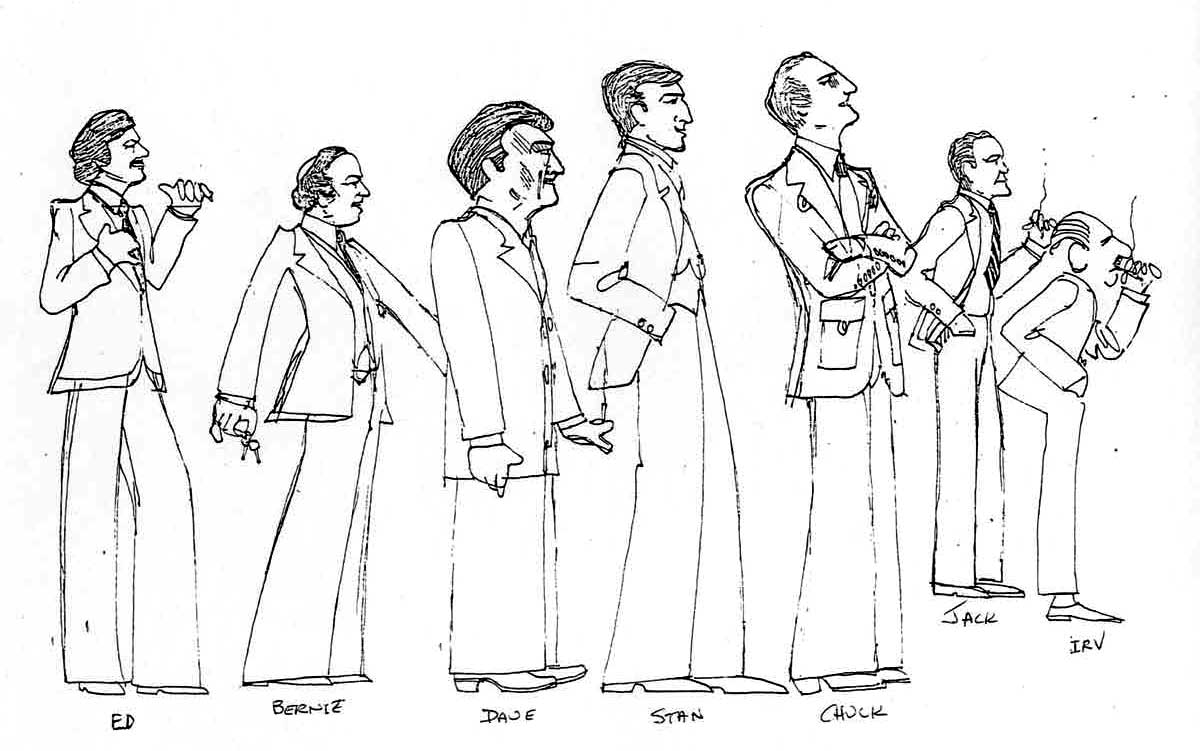
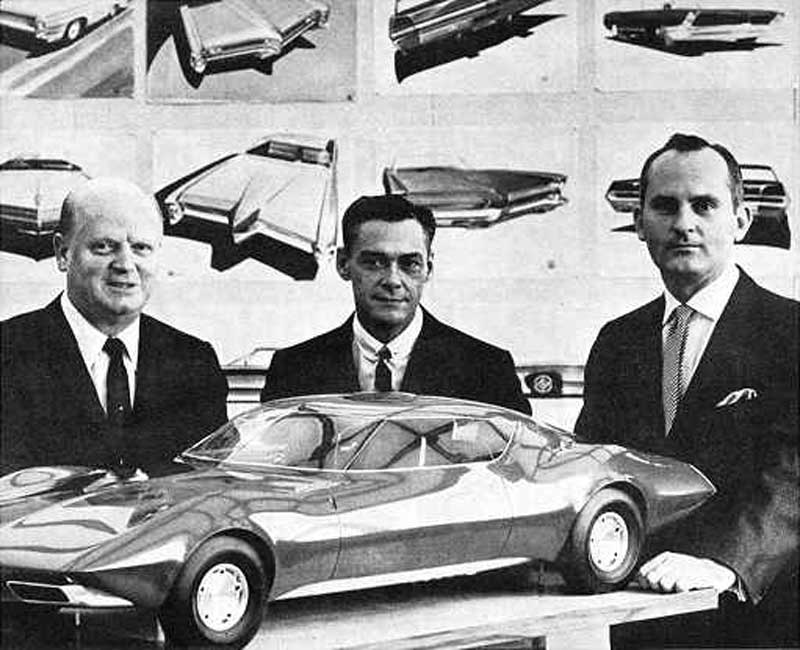
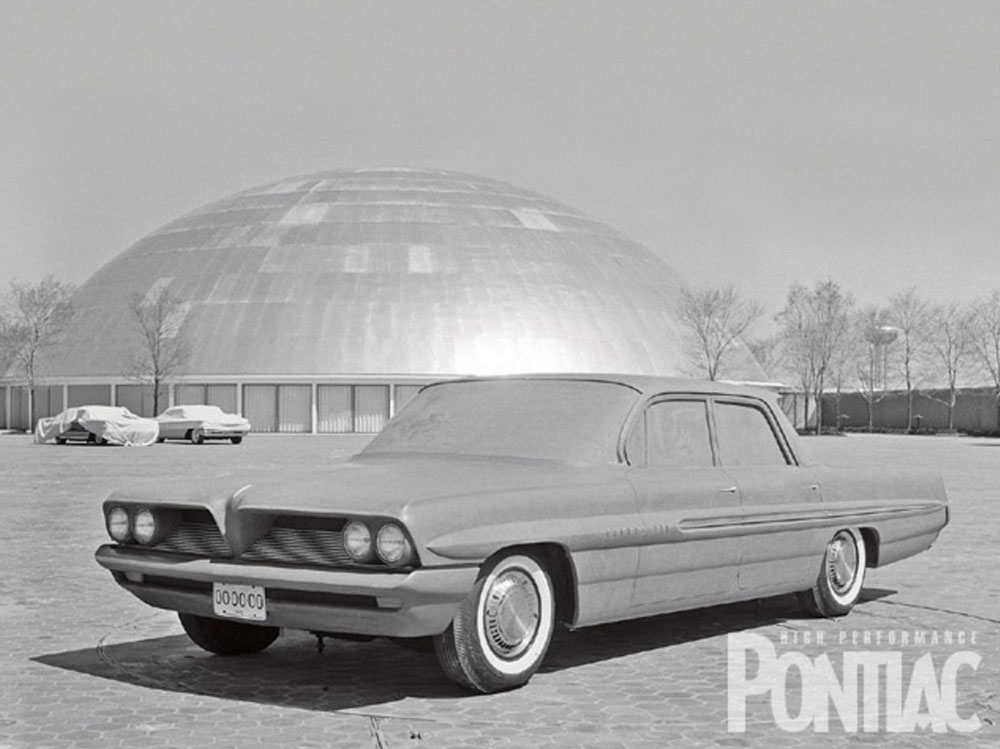
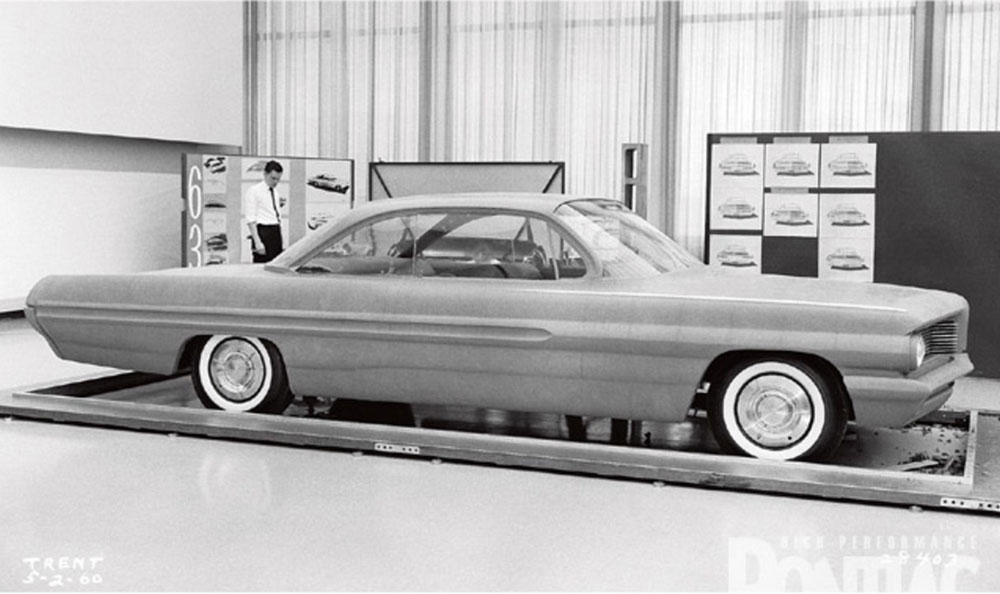
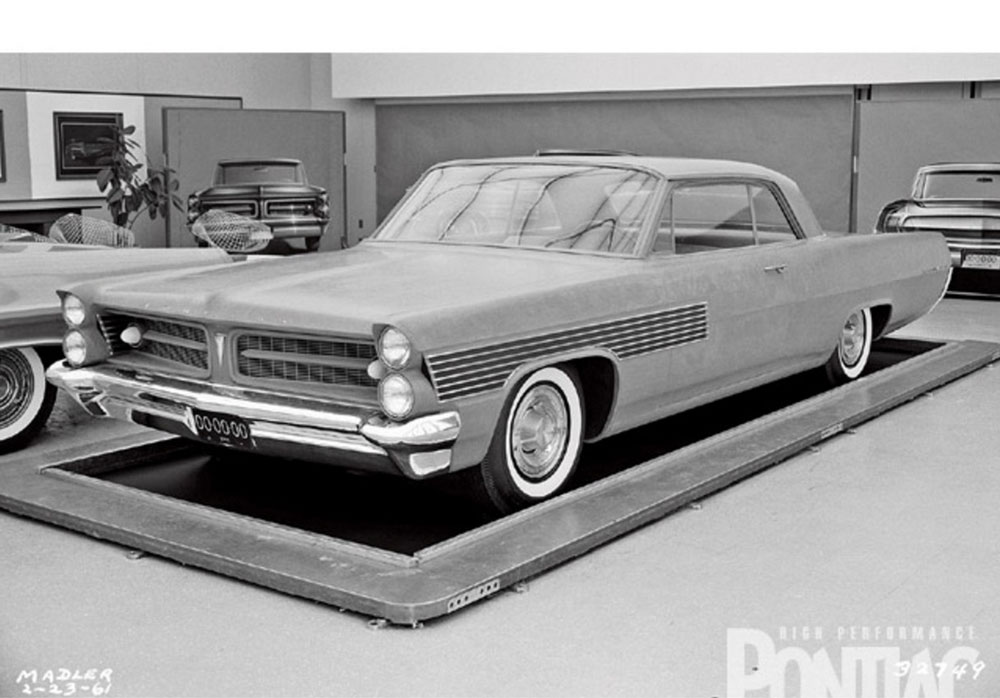
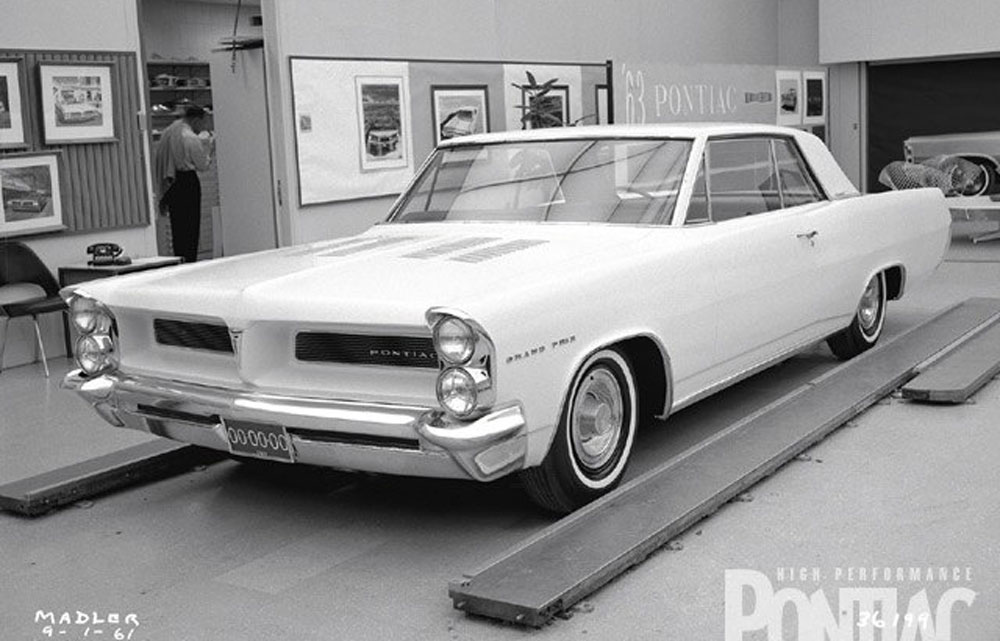
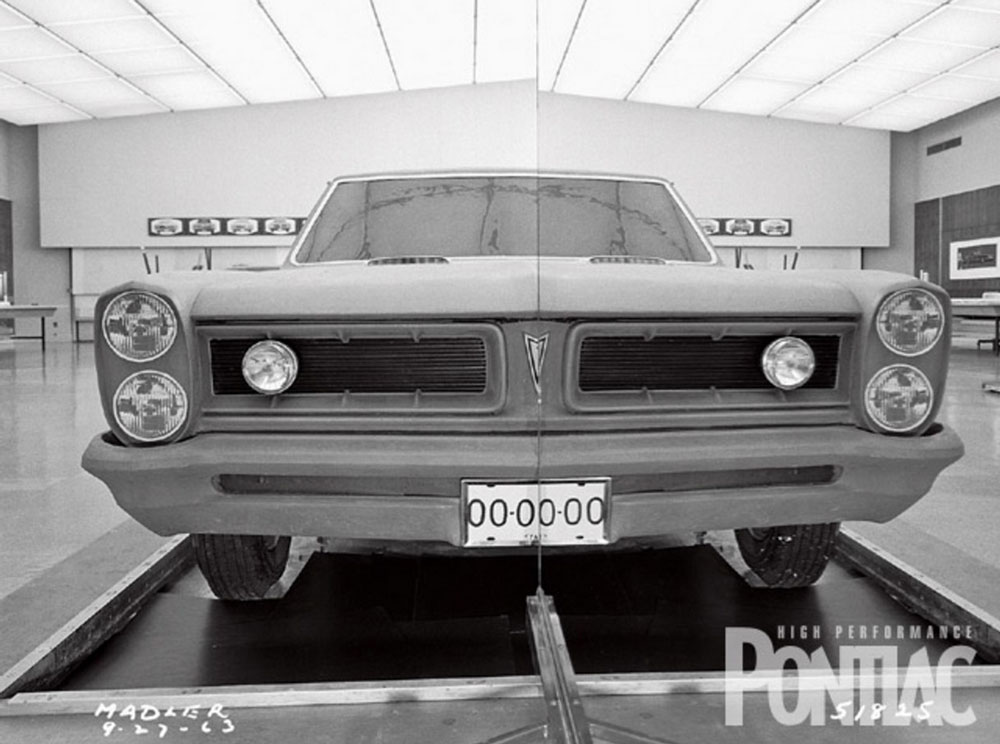
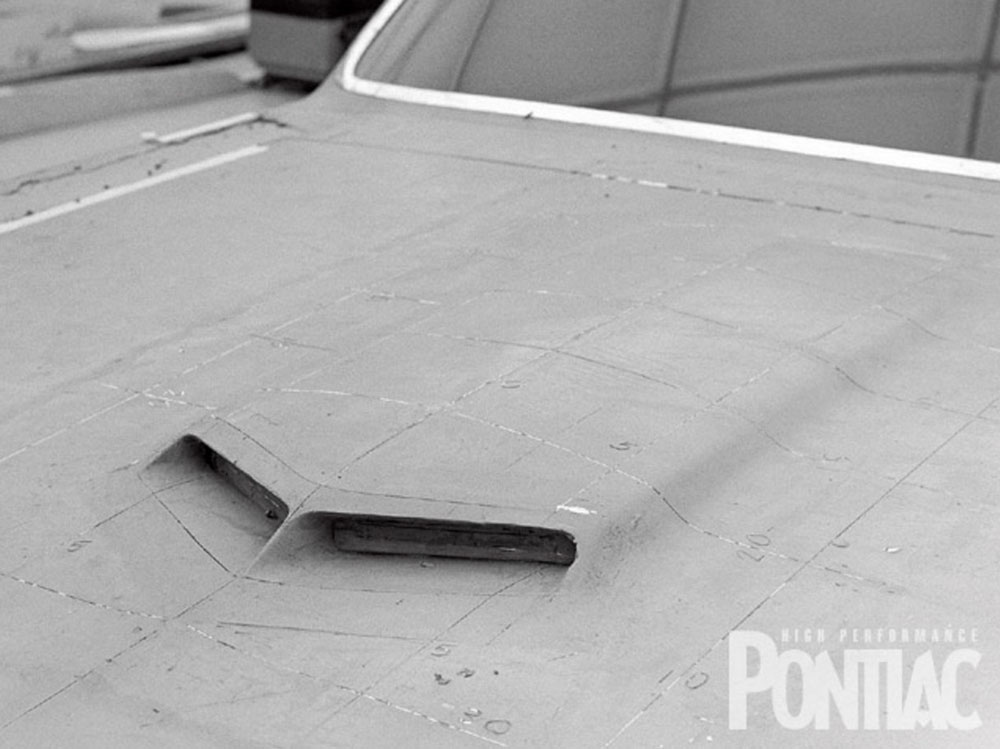
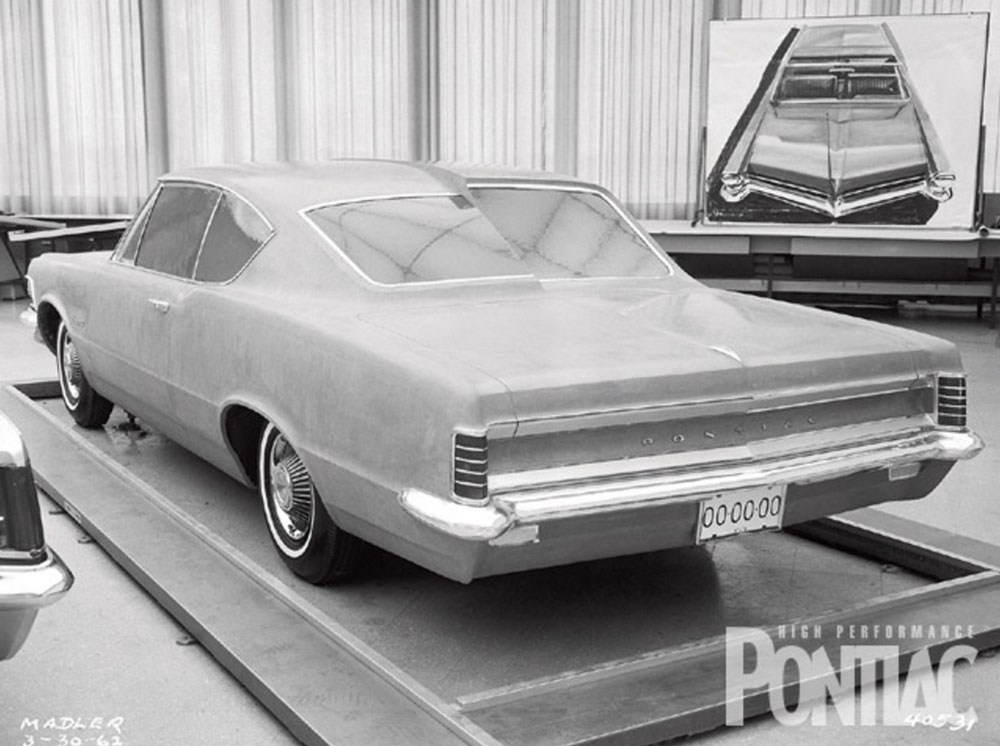
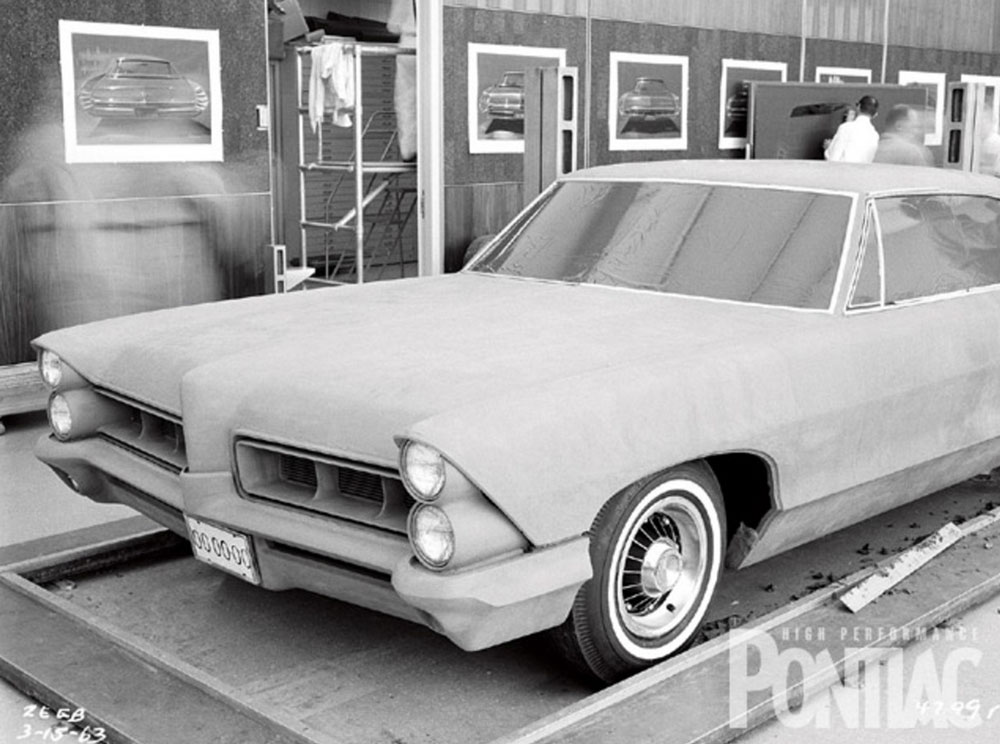
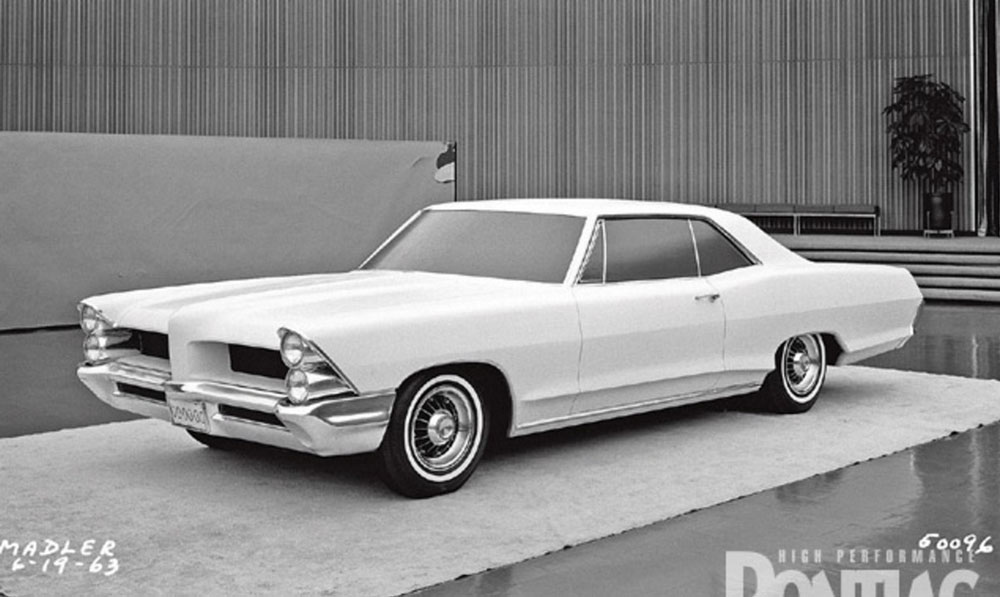
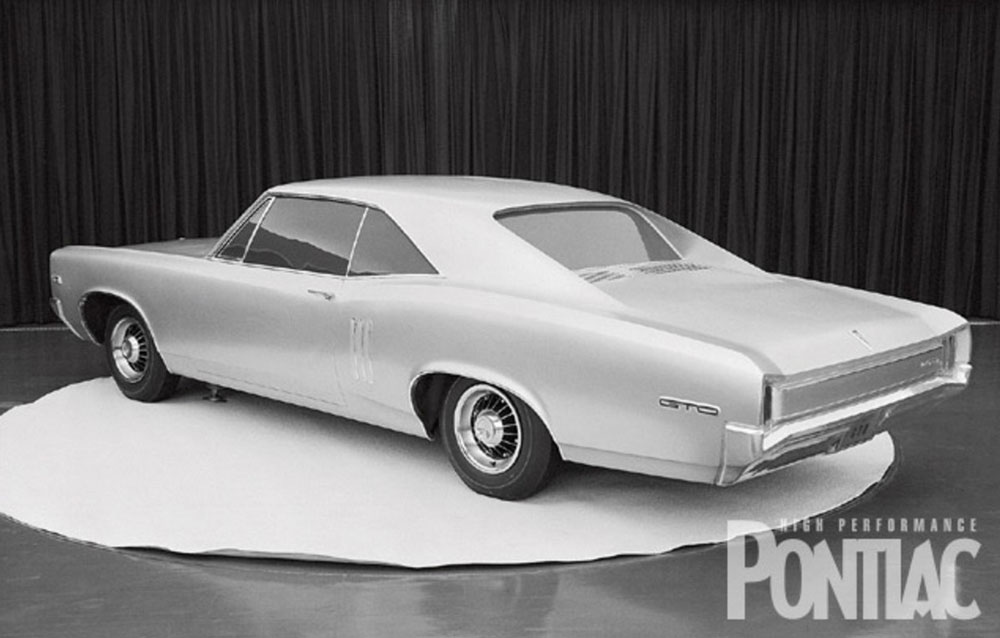
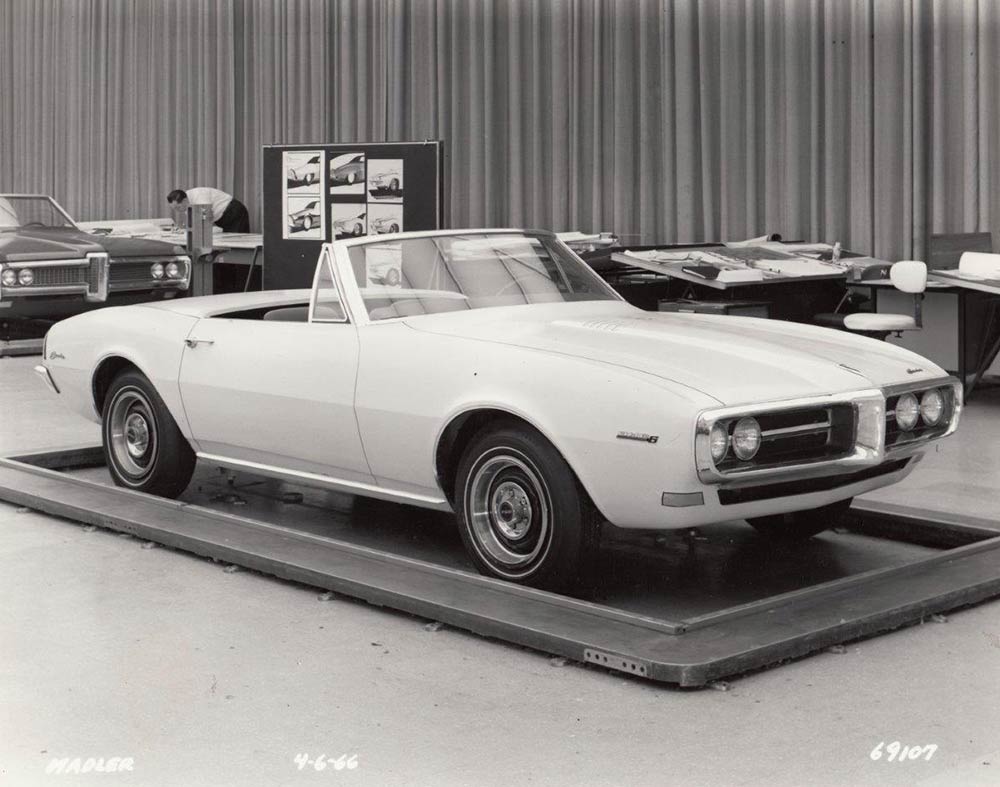
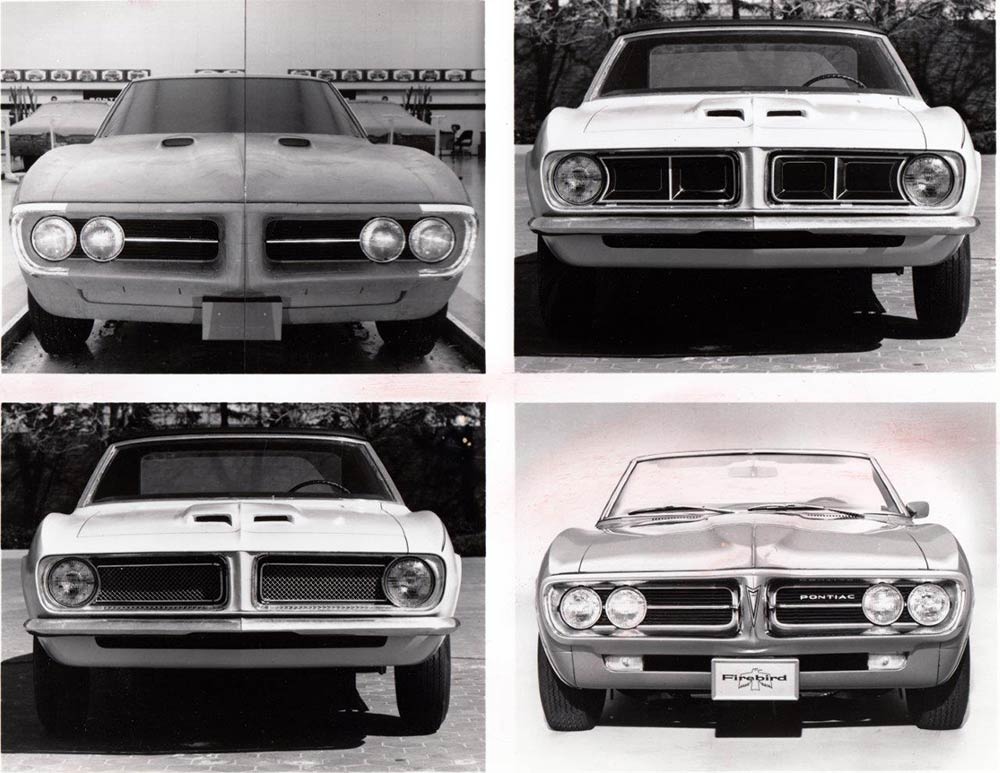
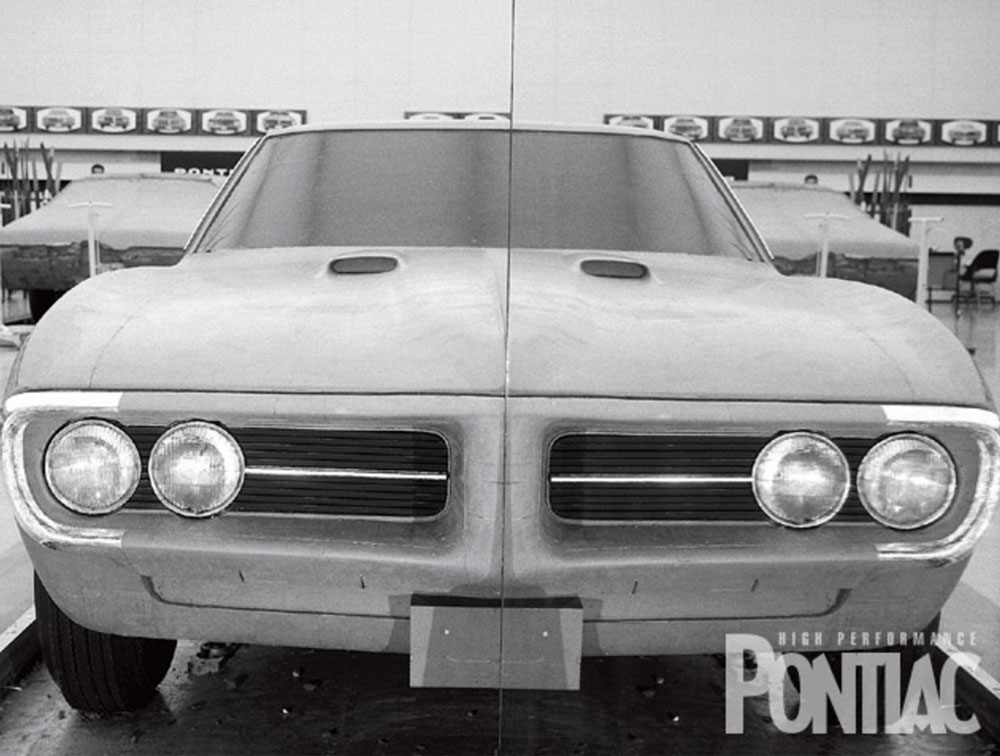
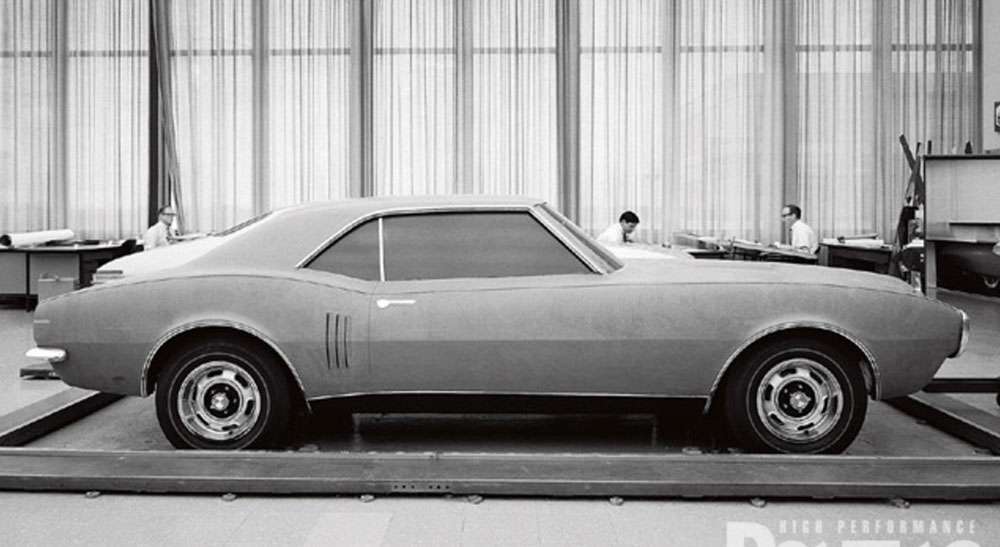
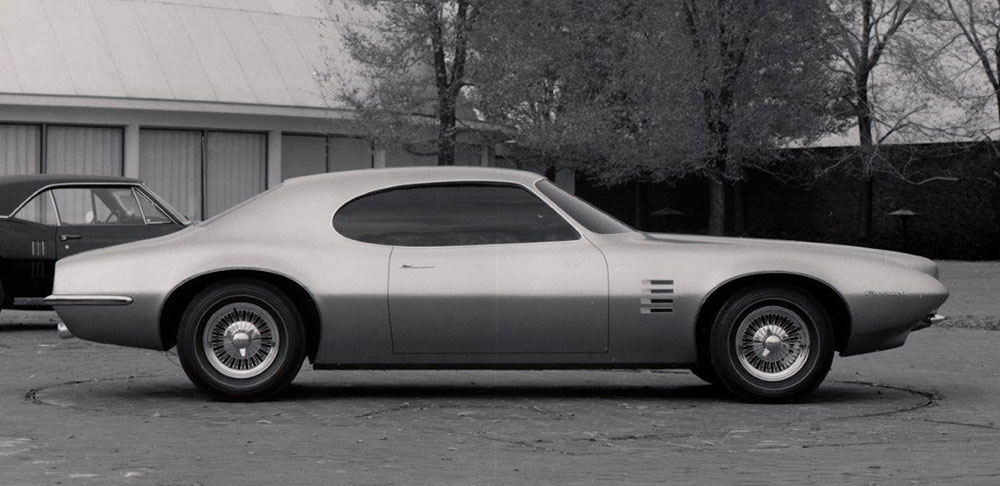
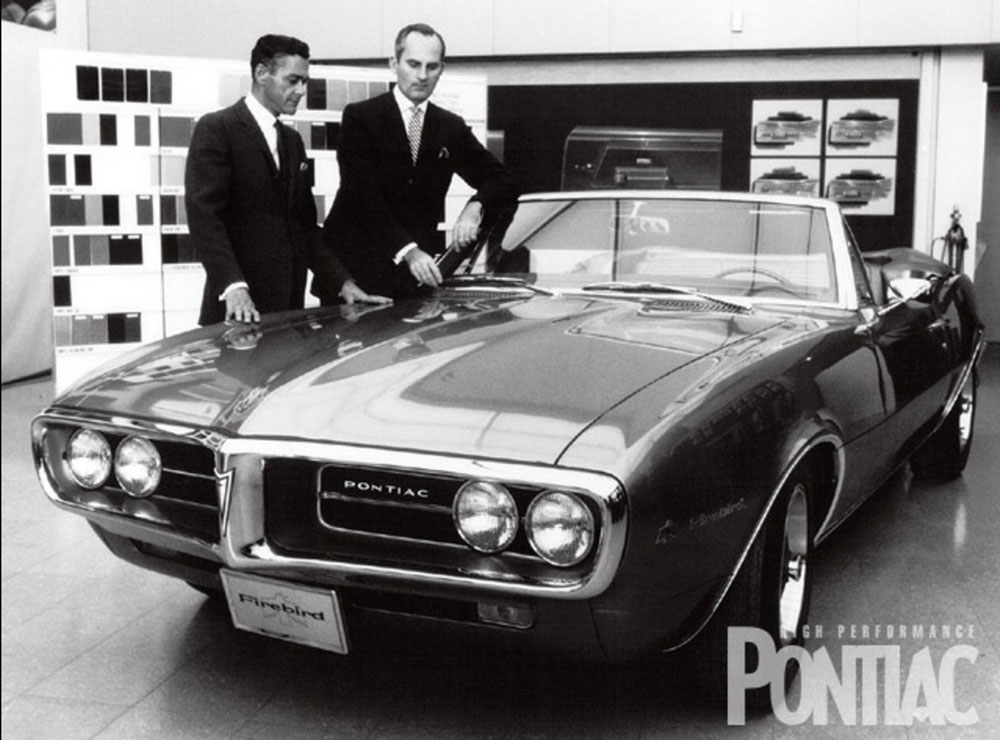
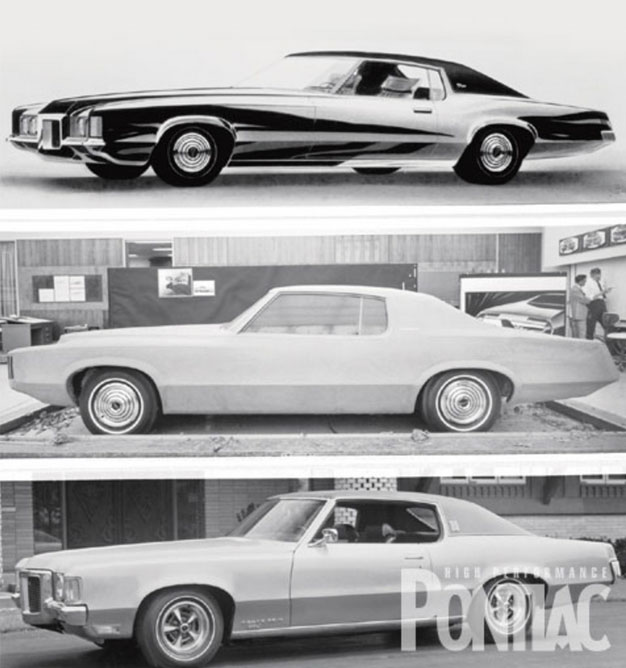
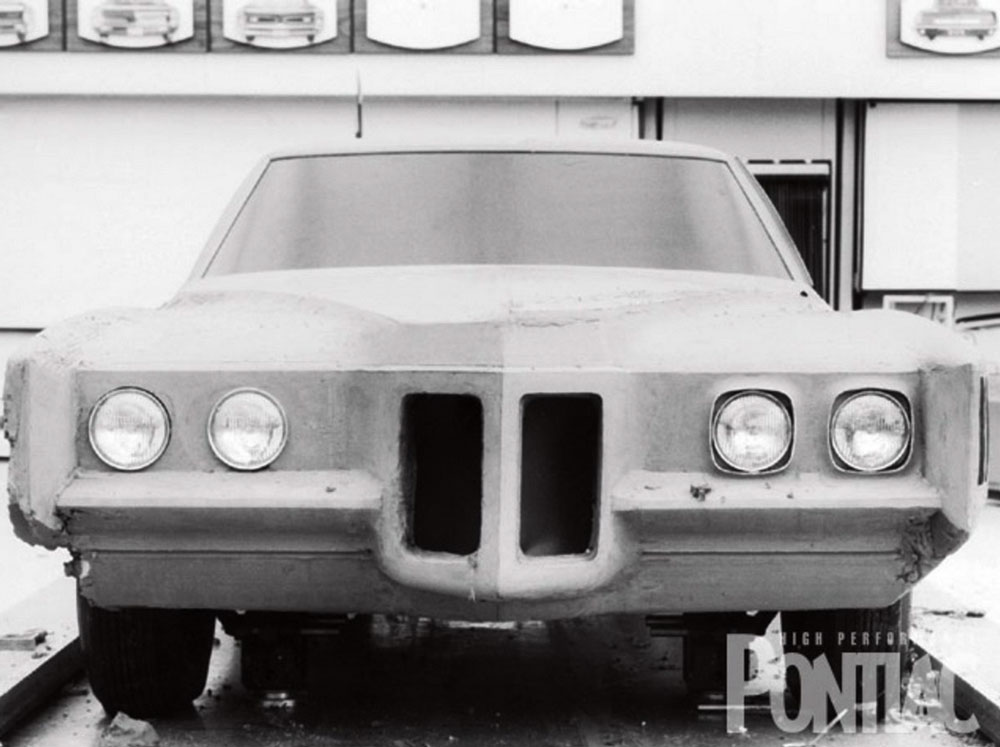
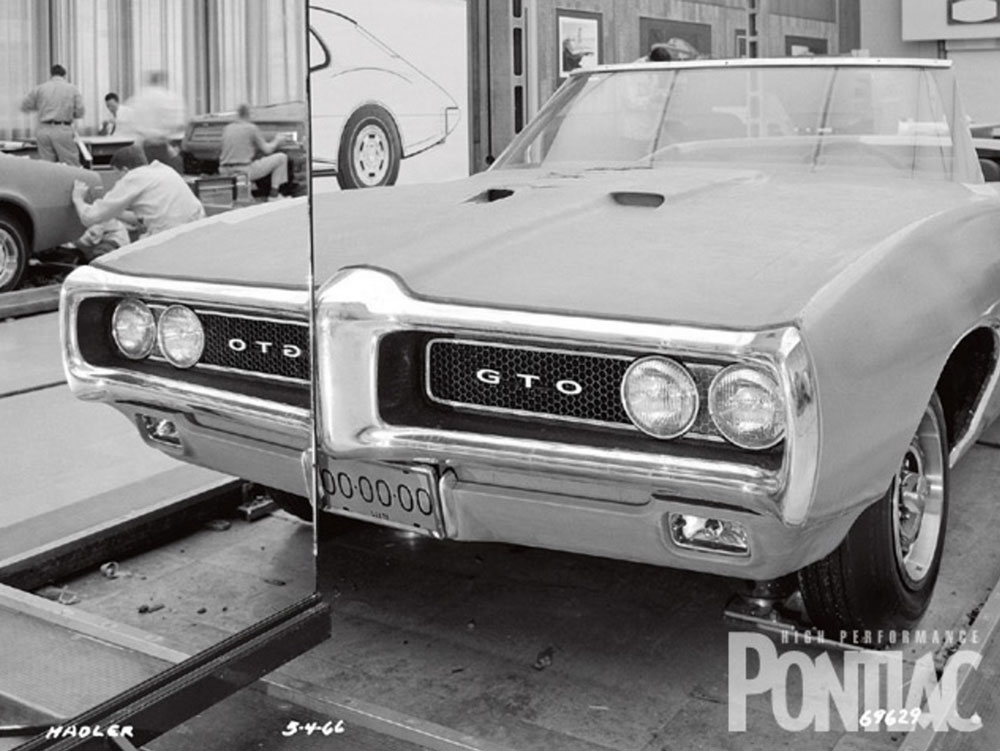
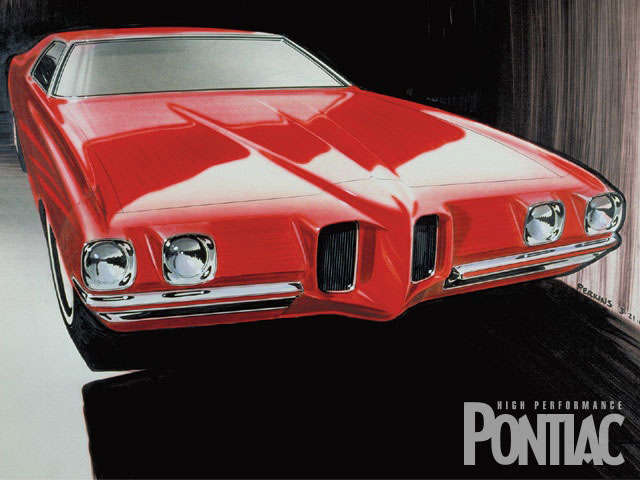
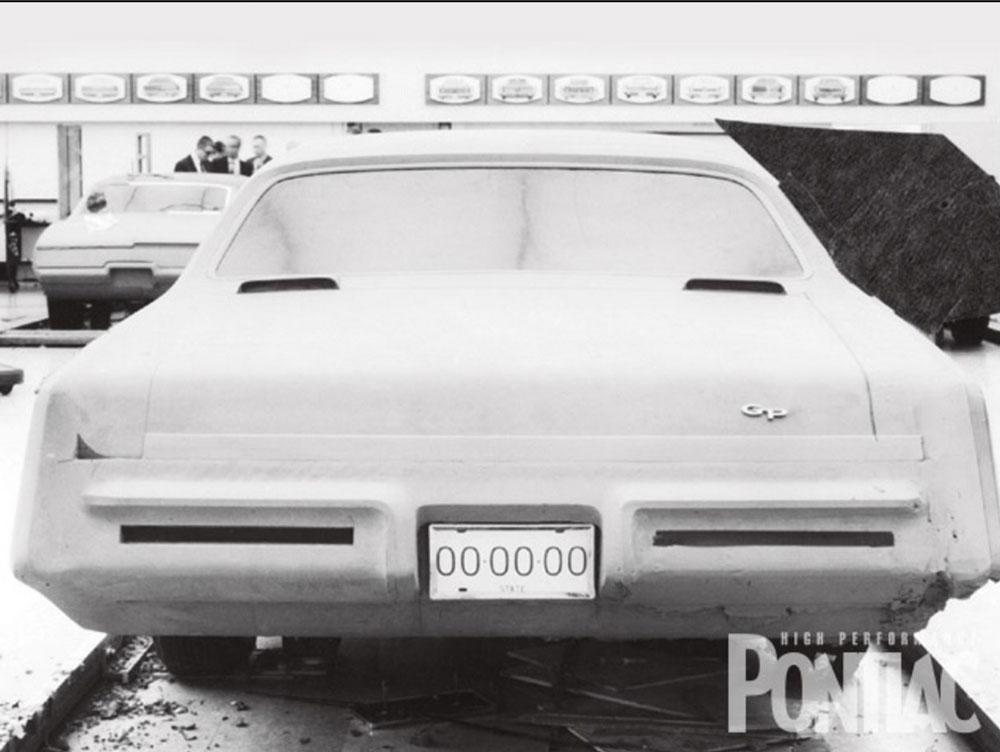
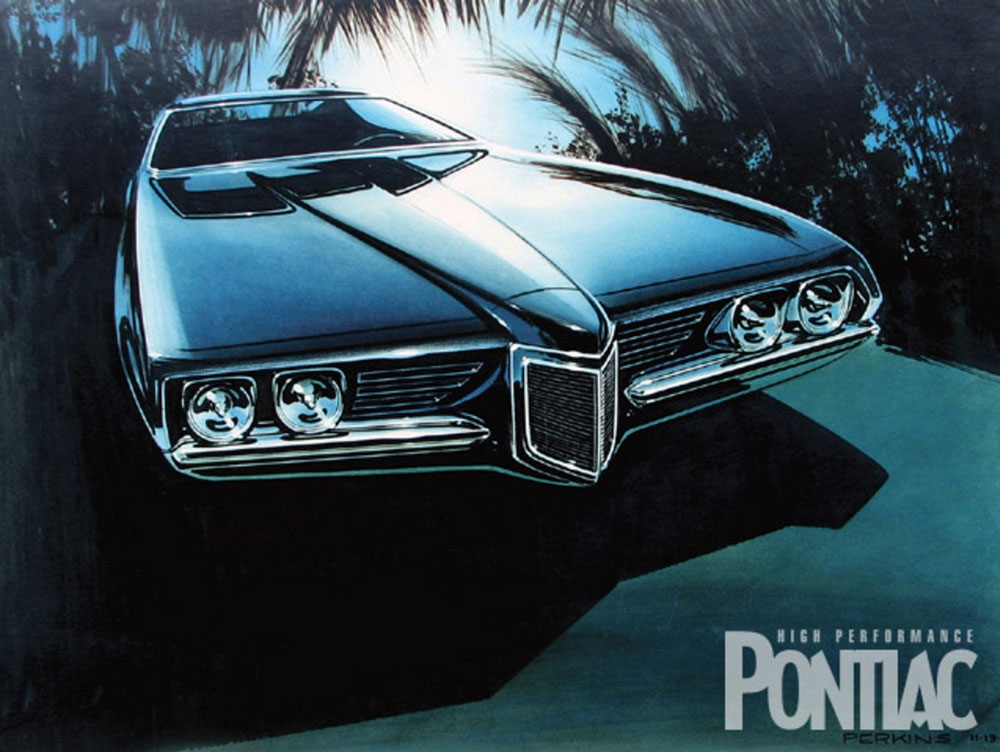
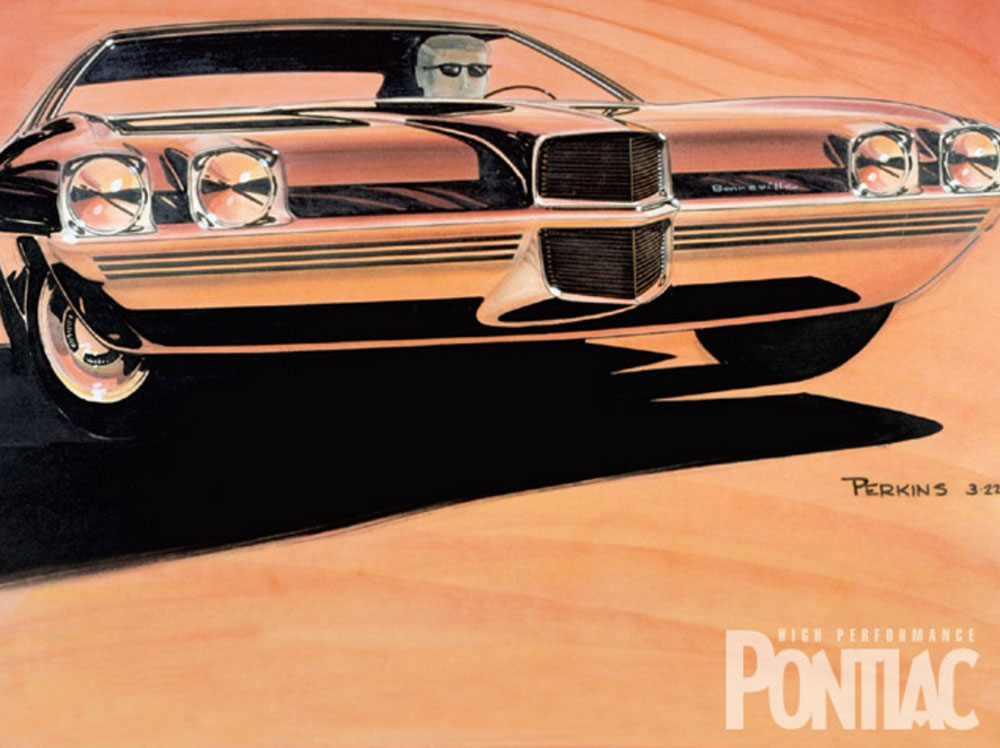
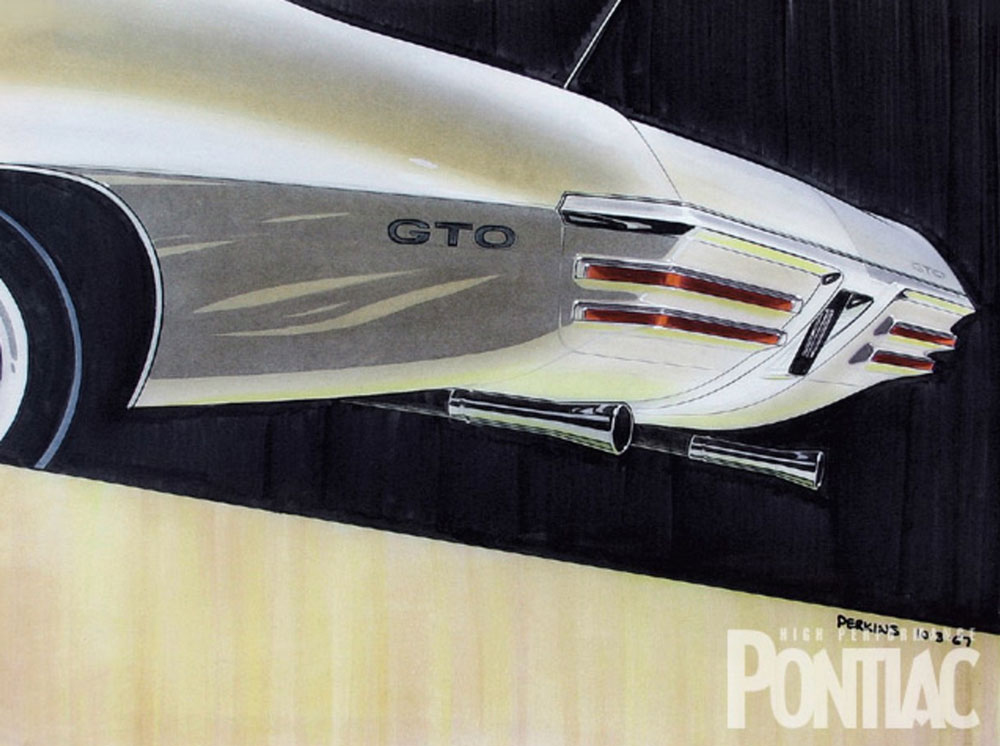
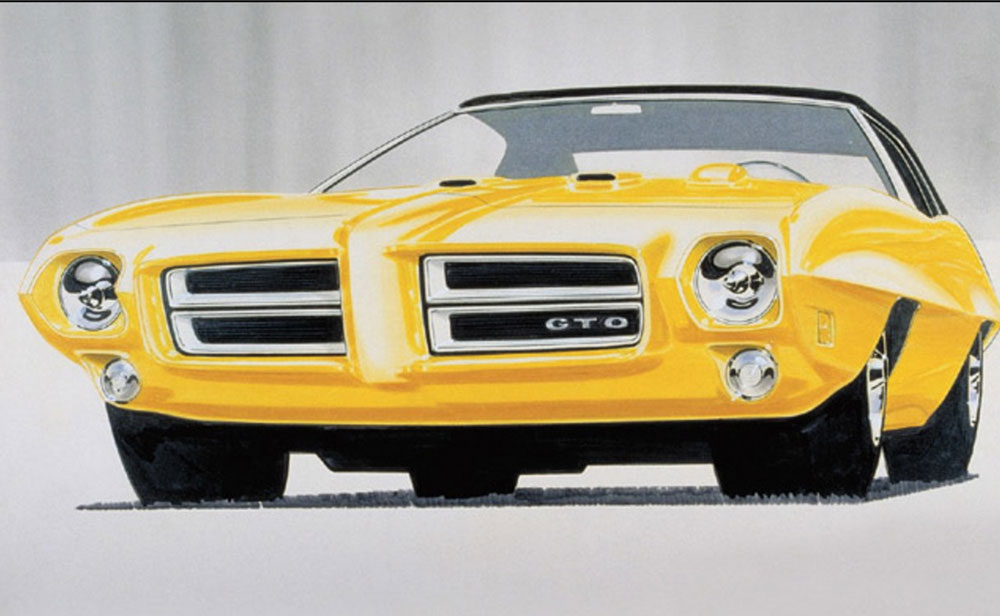
Talk about one of the true unsung hero’s of design. Mr. Humbert was indeed a true gentleman, and a visionary designer. He took me under his wing when I was a ‘newbie’ and taught me a great deal.
When I was the Chief Designer in one of the Pontiac Studios I was constantly aware of Jack’s legacy. I figured if I could accomplish 1/10 of what he did, I would be just fine.
I miss passion for design. What an example he set for myself and those that followed.
An extremely well written article about a legend in our business. To see the adoration of Jack by the great designers, Sculptors, and studio engineers solidifies his spot in the pantheon of GM Design’s golden age.
I can attest that his influence on Pontiac was so pervasive, when we were creating the 1999 GTO Concept, We asked Jeff Denison to bring some of Jack’s classic’s into the design patio to see if what we were working on was in tune with the large footprints that Jack and his team created. Nice to see Jack properly honored.
There are quite a few from his team who are also worthy of recognition soon!
Regards
Brian Baker
GM Designer 1984-2009
current Pres. Detroit Chapter, Society of Automotive Historians
Wonderful piece. Most here will be familiar with this, but I imagine many otherwise knowledgeable car enthusiasts of a later generation likely are not fully aware of just what a powerhouse Pontiac was in the 1960s in terms of design and performance. My father was a Pontiac man in those days, owning a ’62, a pair of ’63s at different times, a ’65 and a ’67 (my favorite). As a car-crazy teen I almost had him convinced to get a new ’69 GP, but Mom intervened and we ended up with an Impala, a big mistake. It is hard to believe how GM let that heritage wither and die.
As an aside, do any of the GM alumni here know who would have led Oldsmobile studios and who would have been main contributors to the design of the 1968-72 Cutlass/4-4-2 A-body program?
A master designer and leader. I never heard him utter a negative word about anyone. A class person who managed to achieve great design with the respect of his team.
My last assignment after Studio-X was working for Jack in the full size Pontiac studio. Loved his 68 GTO so much that I purchased one (green on green, with endura bumper) before I left for the west coast.
Roy Lonberger
My dad had always loved Pontiacs, his dad loved them too. Every year I used to hover around the Packer Pontiac dealership in my Detroit neighborhood during late summer and during fall. With a little luck I would get to see the unusual custom Pontiacs (like 421 Tri-Power-engined sport Bonneville station wagons with bucket seats, consoles, floor shifters, factory air and 8-lug wheels) that Packer put together. And their special race cars. With bit more luck, I got to peek at next year’s models that were bought in and kept covered at the back of the building.
I adored every single Pontiac since my dad and I rolled out of Grates Pontiac dealership in a new 1955 Safari. By the 1960s, each new Pontiac was nirvana for me. To this day I still have a tough time deciding which design I loved the most… except when it came to the 1968 GTO. So I hope I can share a story here without boring anyone… and in extreme praise of Pontiac design, especially under Jack Humbert and Bill Porter.
In 1967 I was undergoing the horrors of being a soldier in Viet Nam. I had not seen the 1967 models at all. But one day, a buddy serving with me got a letter from his dad in Texas. His dad basically promised that if my buddy would just make it home alive, his dad would buy him a new GTO with what they were calling “the invisible front bumper.” He sent a photo of the car and my buddy showed me the picture of the futuristic, voluptuous new 1968 GTO. I was floored. From that moment on we both thought less and less about the incessant heat, incessant rain, the endless bugs, the leeches, the jungle, the humidity, the horrid smells, the bullets, the mortars, the roadside bombs and all the other barbaric things happening around us. Our minds were fixated on that incredible 1968 Pontiac GTO.
My buddy rotated back to the USA a few months before me and wrote to tell me that when he arrived back home in Texas, there was a brand-new red 1968 GTO waiting for him in the driveway. THAT got my fires stoked! But since my father was dead (he died 6 months before they drafted me anyway –with no brothers and no older siblings to run the family business–and then sent me to Viet Nam anyway!). Nice huh? So I had no one waiting back in Detroit to buy me a new GTO. But I decided I would buy my own.
It was about this time that I was lucky enough to walk into a muddy tent in a monsoon in Pleiku. As incredible as it may seem, this tent was functioning as a PX and there… in jungle fatigues, standing on mud-covered wood pallets was a guy selling GM cars! Yes. He told me I could order a new 1968 GTO right there, from Viet Nam! So I did. And yes, I still have the original order for a new 1968 GTO convertible on a from stating it is ordered from Viet Nam!
For the rest of the time I was in that war, I spent much of the time (between the usual miseries) thinking about, dreaming about what it would be like to have my own 1968 GTO convertible. Somehow, through all this wishing and dreaming and hoping and fantasizing, I managed to live and made it back home to Detroit. I like to think it was that GTO that gave me the strength and the wit to survive the horrors going on around me. But somehow I made it back.
So you see, automotive design–especially in this case that I can assure you–did far more than merely ignite a buyer’s passion. It gave me an inspiration and perhaps even a reason to go on despite my nightmarish existence. While I eventually, regrettably sold that car in order to better afford my university studies, I still miss my 1968 GTO. It was loaded with all kinds of goodies like the hood tach… and I had Milt Schornack at Royal Pontiac Bobcat my GTO for me. I think about my GTO almost daily and wonder where it ended up–even after all these years. That’s how much I loved that car.
I can only say that I thank heaven for automotive designers like Jack Humbert and Bill Porter, Chuck Jordan and others. I miss this kind of passionate automotive design. I realize it is too late to tell some of them. But I would certainly like these talented people to know that they and others like them can touch the human spirit far, far beyond merely igniting a sale in a car showroom. Beautiful, passionate automotive design is a creative form that has no boundaries in the good that it can do. And people need to know this.
Thank you all,
Leon Dixon
What a wonderful article about out a wonderful designer. Congratulations Jeff.
There are several facts about Jack that Jeff was not aware of. The designer list should include Alan Flowers, Dave North, Jerry Hirschberg and one more, a talented artist who left and went to New York to be an art director for a magazine, fashion I think, Brian Werker was his name. Maybe Glenn Wintersheid was in there too.
Dave Holls told me that Jack was half American Indian, and that Rudy Reginald’s German ancestors and Jack’s fought a battle down in Ohio in the mid 1800s. A stunning fact that he later should become Chief Designer of a car company named after an indian with the head of an indian as it’s logo!
Also Dave Holls told me that Jack was an interior designer when promoted to Chief of Pontiac exterior. His concept of finish was clearly in another dimension than the other chiefs. The sections on the 1965 cars resulted in mouth watering reflections when the cars moved. The 1965 GM automotive design portfolio was outstanding but the Pontiacs were the stars of the show, they stood head and shoulders above the rest. I can still remember the first time I saw the clay model in the courtyard.
Looking at those cars now I can clearly see that Jack and the studio really had a great understanding of historic American and European performance design which they were able to impart on the cars, especially visible on the interiors. I am sure he had an influence on them, maybe more than we know. The steering wheels, guages and layouts and details. I remember Jack telling me about the four spoke Bugatti steering wheel later.
Also, nothing is mentioned about the 1967 Pontiac design that was conceived in Bernie Smith’s Preliminary Design Studio. We did the front and the side in a very short period of time. Jack came in several times, we had been assigned the task of helping Pontiac Studio out. Finally Mitchell blessed it and he brought Jack and some Pontiac Division people in to see it, all were really pleased. Bernie was on cloud 9! We gave them our drawings which were very complete and I was amazed when I later saw their production model and how close it was to our clay, I clearly recall that when Jack looked at our model he had an expression on his face like someone looking at a Christmas dinner, he just couldn’t wait to dig in to the turkey and pumpkin pie! They did a great job with the Grand Prix version.
Later I got to know him much better, he would get a great smile on his face when he saw something that he really liked, he was great to work for. Unbeknown to me once shortly after being assigned to Chevrolet Two Studio, Chevrolet Division called Irv Rybicki about a show that I had for them for a facelifted Chevette, they were very unhappy. Later that day Jack came into the studio smiling and asked me how the show had gone. it was not what they expected I told him. They were very upset and were actually horrified as to how much we were able to change the character of the car with just a few small pieces. “That’s OK” he said, he smiled, chuckled and said, “Just keep going”. He was always fun.
When I was in an advanced studio he once came in and showed me an album of his daughter’s design work, she had graduated from an art school in costume design. Each piece was beautiful, very detailed and elegant.
He was so proud.
Without question one of the great people in Design’s history, for many reasons. He was a designers designer.
A class act that influenced anyone that was near him.
I should add that the Preliminary Design participation in providing the theme for the 1967 Pontiac resulted in a great example of how Jack could take a theme from somewhere else and add great value to it through his beautiful way of executing design.
Dick Ruzzin
Ken Pickering
It was great to see an article about a first class designer Jack Humbert. When I first moved “upstairs” to GM Styling in 1952, Jack was the lone designer in Pontiac Interiors. Back in those days, only one designer for each of the five car divisions did the interiors of the one divisional car line.
Much later, when Jack was Chief Designer of the Pontiac Studio, I found him one day busy at his design desk. So I asked him what he was working one and he replied, ”Some thing like a Grand Terisimo Obli – or something like that.” Of course, it was the iconic GTO.
When Rybicki became Vice President, Jack, who reported to Chuck Jordan, had an office next to Irv and I was across the hall. We always gathered in Jack’s office for coffee in the morning. Jack had an impossible job as he and Rybicki were close friends and Irv, who did not like Jordan, always wanted Jack to tour the studios with him. Thus, we always had a conflict as Irv, with Jack, who would make design decisions in the morning and Jordan would come around later and change design direction.
Jack passed away at much too early an age. I visited Jack in the hospital in his final days and he said to me, “You may say you will never take chemo, but when that day comes and you are facing death, you change your mind.”
Those words have remained with me a long time. Jack Hubert was one of the finest people I have ever known – a first class individual.
Jack claimed he was part Indian which is why he had such an eagle eye for detail. Anyone who worked for Jack saw this first hand. He was a gentleman, a real car guy and a great designer.
There are several sculptures not mentioned. Kenneth Gelitte/ sp. he was Rudy’s assistant. Dan Buckly who was assigned to Pontiac studio when I was,1962 middle of that year.
I wrote a poem about the studio and would like to submit it.
Al Thol, Dan Buckly and I worked on the front end with the first
Vertical head lights. Almost everyone smoked in the studio in those days.
Russinoff’s designs were done in a style of French Impressionist art work and Bill Mitchel would pass by but never chose one.
I left with a leave of Absence to complete my Masters degree in
Sculpture at Wayne State University and when I returned in about 1965 I was assigned to another studio.
The studio was, if memory serves, advanced design next to
Body design, second floor west end of the building across from
Cadillac studio. As for the best designers I worked with,
Peter Maier, Donald Hronek/departed/ were two of the best.
Peter designed the Bustle Back Seville and Hronek designed the
Last Seville/Cadillac.
PONTIAC DESIGN STUDIO IN 1962.
THANKS FOR THE MEMORIES, I STARTED THE DAY JUST FINE UNTIL YOU SENT ME THESE…
I GUESS I’LL JUST GO DINE ON PEAS.
AND THANKS FOR THE MEMORIES WE WORKED SO CLOSE ITS TRUE
WE DID THE PONTIAC’S THRU AND THRU.
AND JACK WAS THERE AND CAL AND MONTY WAS THERE WITH BILL TRI. AND YOU.
OH DON’T FORGET PAUL ZEBELL, AND RODNEY, DAN, AND OH WELL BILL MITCHEL TOO.
THANKS FOR THE MEMORIES.
WE HAD A SPLENDID TIME WITH DRAWINGS AND CLAY AND RYME.
OH YES THERE WAS RUDY AND THE LITTLE GUY WHO JUST JOINED THEM RECENTLY, KENNY THE DIME.
THANKS FOR THE MEMORIES YOU AND BUCKLEY AND I ARE SOME OF THE FEW LEFT HERE TO CHEAR
FOR PONTIAC, PONTIAC, PONTIAC…AND DON’T FORGET THE APPLE KNOCKER OR HILDE, NO HE’S NOT A GIRL.
THANKS FOR ALL THE MEMORIES. A 1962, CATALINA WHITE TOPPED CONVERTIBLE, IN BLUE. AND CHUCK
KEPT TRACK AND WAS ON OUR BACK, BUT WE NEVER GREW SLACK SO, WHEN WE ALL LOOK BACK WE CAN SING,
THANKS FOR ALL THE MEMORIES WE KNEW.
Fantastic story and great tributes from people who knew Jack. I’m privileged to be among them.
Gary,
Not to be ignored also as one of the designers in Pontiac that had a big influence on the direction of the studo was Bill Porter. I know he was an early designer there when the wide track and the coke bottle shape was developed.
Dick Ruzzin
I am very sorry for some of the names I may have missed when I wrote the article. Being a huge Pontiac fan, I personally felt Jack’s contributions to Pontiac were often over looked, I had always wanted to correct that and let the world know just how very important Jack was to Pontiacs major success in the 60s and early 70s. It took me several years and countless interviews to put the article together, Because it had to be perfect, Jack deserved no less. But it could never have happened without everyone’s help, especially the artwork that was so important for this article. I was never able to find any of Jacks original work in the GM Design archives. A very special thanks to all of those that helped put this very important article together on a true hero in the Design world..my Hero Mr. Jack Humbert
Dad had bought a ’59 Catalina, and all I’ll say about that was what he said” I’ll never buy a bottom-of-the-line car again”. So he bought a ’63 Grand Prix, candy red (not Pontiac’s name), aluminum wheel/brake drum option, leather interior, 4-speed with Hurst shifter, seat belts ($22, Irving Air Chute Co.), Reverb radio speaker, PS/PB. I couldn’t get him to go above the 303 hp 389. Oh, and he got the front anti-roll bar. It was a great car, and beautiful. The concave-curved back window was a real breakthrough, and I do not recall that styling being used again in a window that size. American cars of thet era had some real style, but that ’63 was special.
For a brief time, I worked in Buick studio around 1967-8 when Jack was Irv’s assistant . My memory of him in that short time was a very minor detail on the wheel forms that wrapped up the 1970 Buick Skylark to perfection. Little things DO mean a lot. Nothing escaped him. A great man to work with.
David McIntosh
Thanks for the article Jeff. It’s good to have this historic story available.
Jeff reviews Jack Humbert’s restoration of a Cord 810. Jack told me that a pervious owner had converted the vehicle to rear wheel drive, so Jack was working with a restorer to convert the Cord 810 back to front wheel drive. Jack told me the restorer could actually shrink the sheet metal which was quite a feat as metal usually expands when heated.
In his home, Jack showed me a seat cushion Marshall spring array for the Cord 810, which is a coil spring and not like the zig zag springs used in many cars. Jack had painted each Marshall spring glossy black. No one would never see the spring array when covered with the seat material, but this attention to detail was a hallmark of Jack Humbert.
I have often wondered what became of that Cord 810 and if anyone else finished the restoration. Anyone know the answer to that question?
Jacks beautiful black 1937 supercharged Cord 812 was finished to perfection and was in the prestigious John McMullen collection until he auctioned off most of his cars several years ago with RM auctions. It sold for a record price of $297,000, I am not sure where the car resides today? There is a picture of the car in the High Performance Pontiac article. The original RM auction catalog quotes “The Cord 812 remains one of the most significant vehicles in the history of automotive Design” Jack even knew what cars to collect. I was amazed I was able to convince a Pontiac magazine to run a photo of a Cord, but they gave me free reign.
Thanks Jeff for the information about Jack Humbert’s Cord 810!
That message from Leon Dixon was the most incredibly written story about design that I have ever seen or heard. God bless him for his service during a terrribly misunderstood period of our country’s history.
When we were designing cars the significance of our actions was not even considered, we just wanted to design great looking cars, because we really loved them. We wanted to somehow be part of that great American car story.
If we had ever taken the time to really understand the impact of our actions we probably would have been frozen in fright and inaction. It was a lot of small steps, a lot of hard work but also an incredible thrill when you finally saw that car rolling down the street. That is when you really understood what you were involved in, wht you had really done and how goodit really was.
Jack Humbert was special in a special group of people and everybody knew it. Once someone told me that Jack was the best person in the studio, that he could design, sculpt and engineer better than anyone else in there.
A class act without question.
Dick Ruzzin
That is a young, 90-pound David North standing with the clay model in photo 3. Pontiac was my 1st studio assignment in 1960. Jack was the “best boss, best designer best person “ I knew at Design staff. Really got to work close with Jack in mid ’70s when the Adv. Studio I was head of was where Mitchell was doing his “Swan Song” new down sized E cars. Of course the Riviera was his pet project. Jack worked very close with me every day, and Mitchell was in 3-4 times a day. Jack had a Magic talent for detail, and Mitchell had no patience to see his dream come true. Jack never got flustered , and when Bill would leave he just went on making small improvements on the clay.
To Greg,
Question about some Oldsmobiles. The Cutlass program came after the Toronado and I remember thinking at the time that a little of that Cutlass could really improve the 1966 Toronado. The 442 was first done as a New York show car and I was set to see it in the show, Stan Wilen the studio chief conjured up the name, 442. 4 Speed, 4 Barrel carbureetor and 2 Exhausts.
I was given the task of leading the 442 design effort, because I had a Corvette and had an earlier MGTD hotrod. Then I worked on the production version, my all red sketch went to advertising and became a magazine ad. Dick Finegan became Assistanr to Stan on the 68 Cutlass later and my sketch started the 1967 B body but I was transfered to Preliminary Design so did not see it finished. Chuck Mason was in there at the time and Frank Munoz, a great guy also.
DICK RUZZIN
Thank you, Dick Ruzzin, for the info on the ’60s Olds A-body program. Much appreciated.